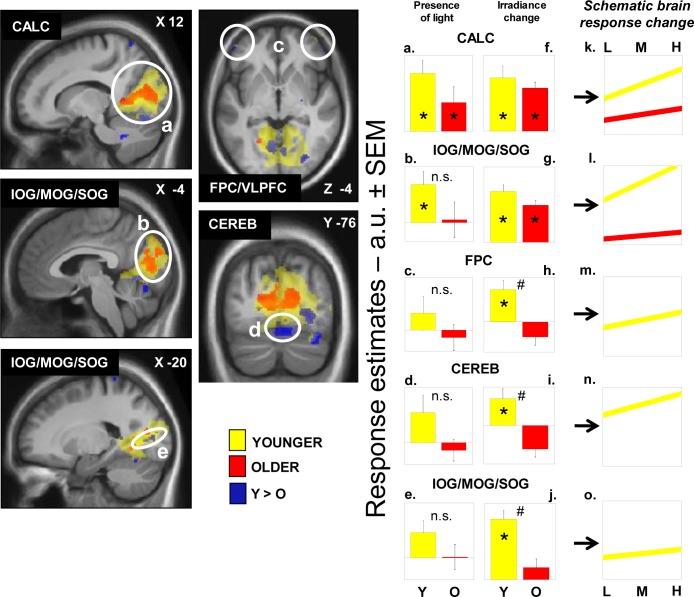Figure 3.
Effect of irradiance level of light on brain responses of younger and older individuals performing an auditory two-back task. Statistical results (P < 0.001 uncorrected) overlaid over the mean structural image of all participants. Significant changes in responses as a function of irradiance level are displayed in yellow for younger individuals (Y) and in red for older individuals (O), whereas group differences (Y > O) are in blue. Panels a-e represent estimates [arbitrary units (a.u.) ± standard error of the mean (SEM)] of the brain responses while exposed to blue light independent of the irradiance change. Many of these responses are not significant (n.s.) and those that are significant correspond to the results reported in Figure 4. Panels f-j represent estimates (a.u. ± SEM) of the linear change in brain responses with change in irradiance level. Panels k-o consist of a schematic representation of the composite of both components (responses to light and irradiance change) showing the evolution of the responses with change in irradiance level. Panels m-o only include younger individuals because responses were not significantly affected by irradiance change in older individuals in the brain regions considered. See Table 3 for names of the brain regions corresponding to the letters and abbreviations. *P < 0.05 corrected for multiple comparisons over small volumes of interest; #significant group differences P < 0.05 corrected for multiple comparisons over small volumes of interest.

